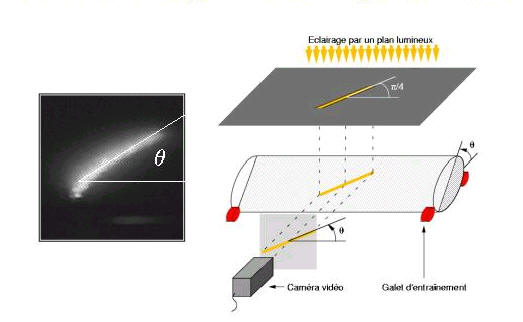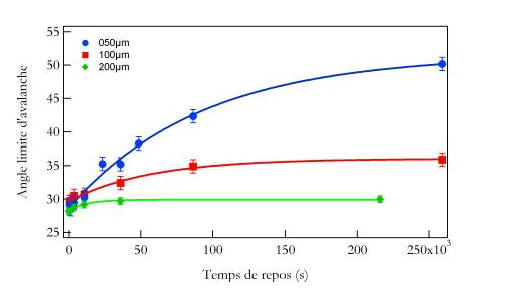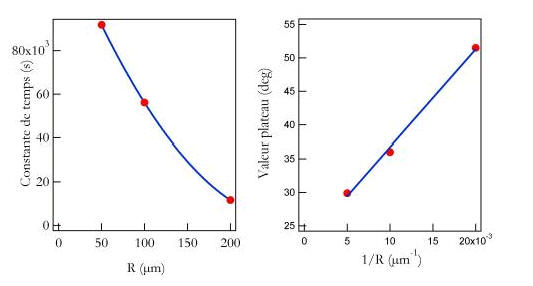
Ageing of immersed granular materials
Collaboration with
Hervé
Gayvallet
Introduction
The mechanical response of granular materials subjected to stress is likely to depend on the "age" of the sample. Whereas the condensation of capillary bridges can explain a part of the ageing process in dry granular materials, the question of the ageing of immersed granular matter remained open. We measured the evolution of the avalanche angle of immersed granular matter and demonstrated that, in these systems, the ageing of the mechanical properties is due to chemical reactions.
Experiment

Fig.1:
Sketch of
the
experimental
setup.
The
granular
material
fills the
half of
the inner
volume of
an
horizontal
cylinder.
The glass
tube is
rotated
around its
horizontal
axis by
mean of 4
driving
wheels
(red). The
angle that
the free
surface of
the
granular
material
makes with
the
horizontal
plane is
measured
on the
image from
a CCD
camera
(see
article
for
details).
We designed an experimental setup (Fig.1) that makes possible to measure accurately the avalanche angle of an immersed granular packing: the granular material fills half of the volume of a transparent cylinder, the remaining void space is then filled with a liquid. The cylinder is rotated at constant velocity by mean of four driving wheels The optical system makes possible to measure the avalanche angle far away from the boundaries.
Results

Fig.2: Evolution of the avalanche angle as function of the waiting time (the time during which the system remained at rest previous to measurement). We observe that ageing of small glass beads in water leads to larger variations of the avalanche angle with time.

Fig.3: Associated characteristic time and asymptotic value. We observe that ageing of the small particles is slower than ageing of larger ones (the characteristic time decreases with the size) whereas the maximal variation ("asymptotic value") is larger for the smaller particles.
The experimental results show that ageing of the granular material is measurable only if chemical reactions occur between the fluid and the grains (typically glass beads in water). We observe that ageing of small grains is slower (smaller characteristic time even if the initial slope is larger) but of larger amplitude than that of large grains (Fig.2). We measured the associated characteristic times and amplitudes as functions of the grain size (Fig.3); the experimental results can be accounted by a chemical-kinetics model.
Related publication
Ageing in
granular matter : a chemical effect,
Gayvallet H. , and Géminard J.-C., Eur. Phys. J. B 30
(2002) 369.